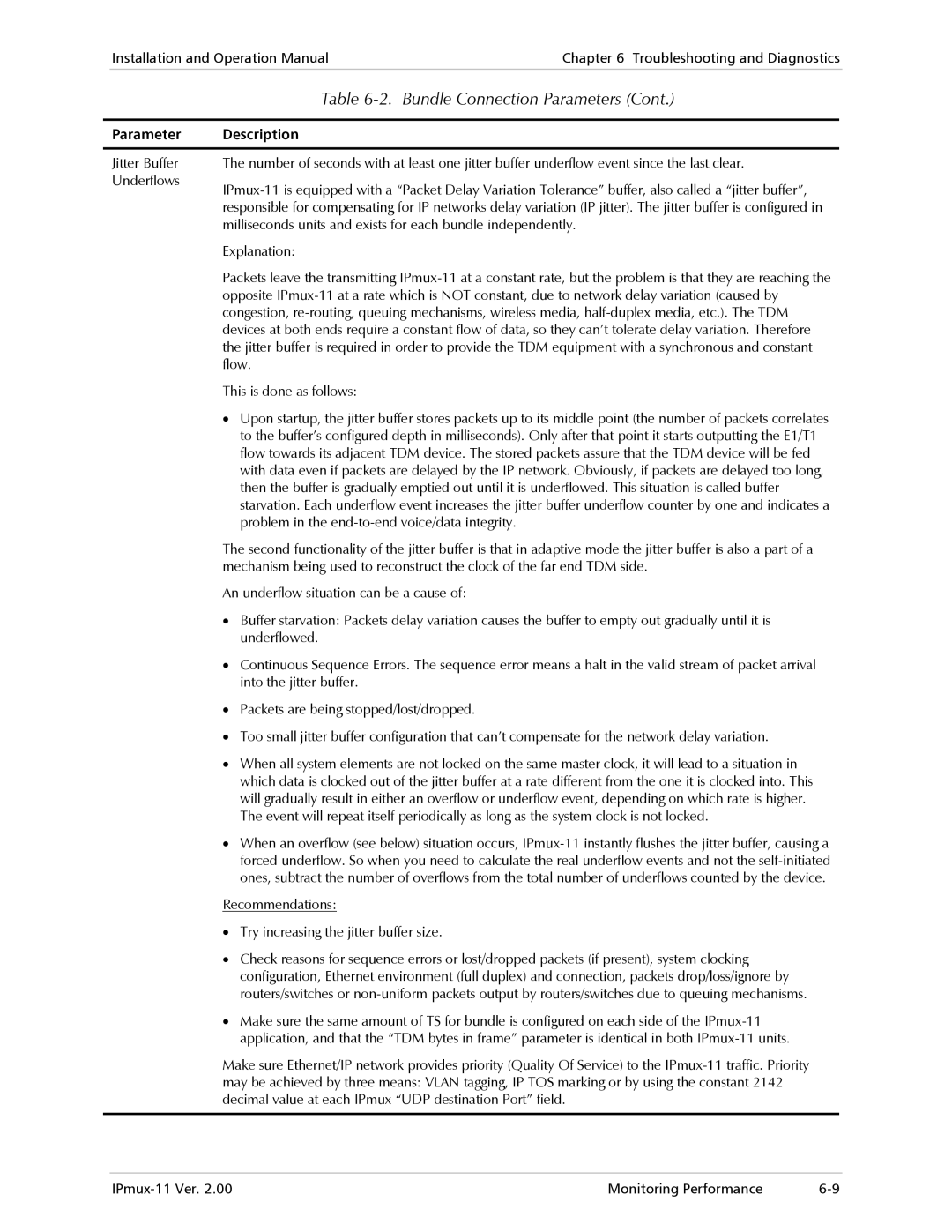
Installation and Operation Manual | Chapter 6 Troubleshooting and Diagnostics |
|
|
Table 6-2. Bundle Connection Parameters (Cont.)
Parameter Description
Jitter Buffer Underflows
The number of seconds with at least one jitter buffer underflow event since the last clear.
Explanation:
Packets leave the transmitting
This is done as follows:
•Upon startup, the jitter buffer stores packets up to its middle point (the number of packets correlates to the buffer’s configured depth in milliseconds). Only after that point it starts outputting the E1/T1 flow towards its adjacent TDM device. The stored packets assure that the TDM device will be fed with data even if packets are delayed by the IP network. Obviously, if packets are delayed too long, then the buffer is gradually emptied out until it is underflowed. This situation is called buffer starvation. Each underflow event increases the jitter buffer underflow counter by one and indicates a problem in the
The second functionality of the jitter buffer is that in adaptive mode the jitter buffer is also a part of a mechanism being used to reconstruct the clock of the far end TDM side.
An underflow situation can be a cause of:
•Buffer starvation: Packets delay variation causes the buffer to empty out gradually until it is underflowed.
•Continuous Sequence Errors. The sequence error means a halt in the valid stream of packet arrival into the jitter buffer.
•Packets are being stopped/lost/dropped.
•Too small jitter buffer configuration that can’t compensate for the network delay variation.
•When all system elements are not locked on the same master clock, it will lead to a situation in which data is clocked out of the jitter buffer at a rate different from the one it is clocked into. This will gradually result in either an overflow or underflow event, depending on which rate is higher. The event will repeat itself periodically as long as the system clock is not locked.
•When an overflow (see below) situation occurs,
Recommendations:
•Try increasing the jitter buffer size.
•Check reasons for sequence errors or lost/dropped packets (if present), system clocking configuration, Ethernet environment (full duplex) and connection, packets drop/loss/ignore by routers/switches or
•Make sure the same amount of TS for bundle is configured on each side of the
Make sure Ethernet/IP network provides priority (Quality Of Service) to the
Monitoring Performance |
